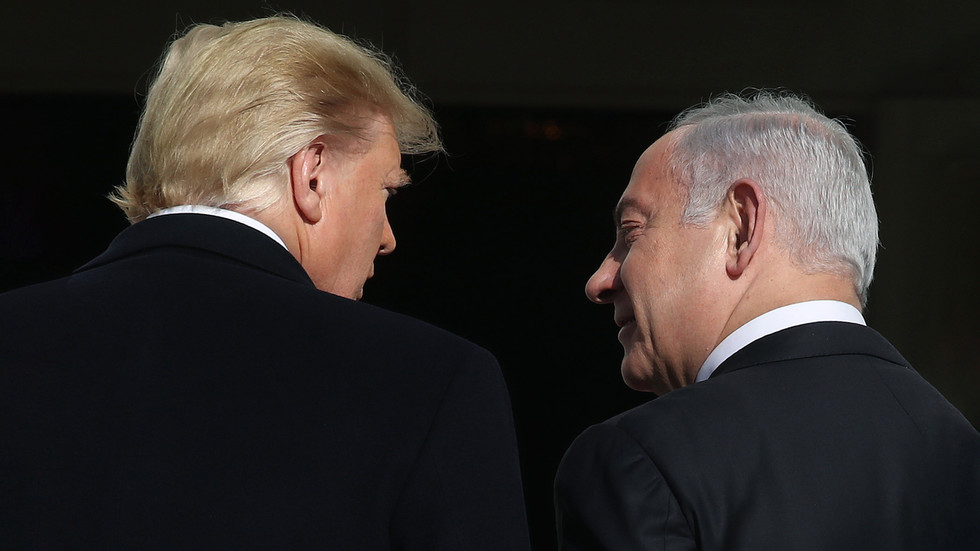As Donald Trump prepares for a potential second term as president, speculation abounds regarding how his administration will impact global politics, especially in the context of West Asia, commonly referred to as the Middle East. His previous term provides a preview of his likely policies, suggesting a continuation of strong support for Israel, albeit with some nuances in his approach toward the ongoing conflicts in the region. Trump’s unwavering backing of Israel contrasts sharply with what he characterized as Joe Biden’s excessive pressure on Israeli Prime Minister Benjamin Netanyahu. While on the campaign trail, he indicated a desire for the conflicts in Gaza and Lebanon to conclude swiftly, his remarks seem more aligned with political rhetoric than concrete policy proposals, especially as he navigates a diverse electorate that includes a significant number of Arab and Muslim voters in certain states.
A significant source of financial backing for Trump’s reelection efforts is Miriam Adelson, a billionaire known for her staunch support of Israel. Her $100 million donation came with the condition that Trump allow Israel to pursue the annexation of parts of the occupied West Bank. This mirrors previous support her late husband, Sheldon Adelson, provided, specifically regarding the controversial move of the U.S. embassy to Jerusalem in 2018. Although Israel may face challenges in immediately enacting plans for annexation, a substantial consolidation of control over Area C of the West Bank could irreversibly undermine any hopes for a viable two-state solution. Regarding the humanitarian crisis in Gaza, if Trump’s administration opts to sever aid, the consequences could be dire, effectively leading to catastrophic conditions for the Palestinian population. However, it is anticipated that his administration will likely mirror Biden’s cautious approach instead of adopting more aggressive measures.
President Joe Biden, upon taking office, promised a shift in policy towards West Asia, vowing to end the war in Yemen and take a tougher stance against the Saudi leadership, alongside revitalizing the Iran Nuclear Deal. Nonetheless, his administration has largely continued the previous administration’s hardline strategies against Iran and failed to address the humanitarian crisis in Yemen effectively. The war’s toll remains unchanged, with ceasefires and negotiations largely being brokered by the United Nations, leaving the U.S. position compromised and at odds with its declared intentions. In a broader sense, the Biden administration has not deviated far from Trump’s fundamental strategies, showcasing a pattern of continuity rather than transformation in America’s West Asia policy.
Notably, Biden focused intensively on solidifying alliances in the region, particularly regarding normalization agreements between Israel and Arab states, framing them as essential for establishing regional cooperation. This approach resulted in a pivot towards Saudi Arabia as a cornerstone of U.S. strategy in the region, aiming to forge an “Arab NATO” while sidelining concerns pertaining to Palestinian rights. This short-sighted vision spotlights a foundational issue in U.S. policy, which seemingly dismisses Palestinian agency, contributing to rising tensions, exemplified by the escalation of violence following Hamas’s attacks on Israel in October 2023. The enduring neglect of Palestinian issues appears to undermine broader stability in the region and complicate U.S. diplomatic efforts moving forward.
As for Iran, it remains uncertain how aggressively Trump will pursue existing policies. The potential for conflict looms large, with questions surrounding whether he will replicate his earlier hardline stance or opt for a de-escalation approach that could avoid a costly military endeavor. An analysis grounded in realism suggests that most U.S. administrations would shy away from initiating a war that is viewed as unwinnable and could complicate domestic economic recovery. Despite a history of contentious relations with Iran, U.S. foreign policy’s direction remains closely linked to regional dynamics, which may evolve in response to how conflicts in Gaza, Lebanon, and with Iran itself unfold.
Trump’s cordial relationship with Gulf states, particularly Saudi Arabia and the UAE, may facilitate crafted negotiations and trade agreements. However, the ongoing warfare involving Israel raises pressing questions about the U.S. strategy’s coherence in this volatile environment. Israel’s post-war status will likely have significant implications for American policy, particularly if the Israeli government is forced to reconsider its strategies in light of potential military setbacks. A scenario involving a failure in Israeli military objectives could lead to significant concessions or a forthcoming diplomatic shift, while the alternative—successful military outcomes—could motivate further alignment with U.S. policy objectives favoring Israeli national security. As Trump prepares to enter office, indications suggest a continuation of previous policies, with the likelihood of an assertively pro-Israel stance, albeit underlined by the constant risk of severe geopolitical repercussions, including the specter of conflict with Iran.
In conclusion, while Trump’s administration seems poised to pursue several of the strategic pathways laid down in his initial term, the evolving dynamics in West Asia, especially surrounding Israel and Palestine, promise to reshape his approach as regional tensions fluctuate. The interplay of local conflicts, international expectations, and domestic pressures will challenge Trump to balance his policies between assertive support for Israel and the pragmatic considerations necessary for fostering stability across a region fraught with unrest. With a focus on economic recovery at home and navigating international alliances, the efficacy of his strategies remains to be seen. Ultimately, Trump’s presidency harbors the potential for both continuity and change in American foreign policy, marred by the complexities and unpredictability inherent within West Asia’s geopolitical landscape.

